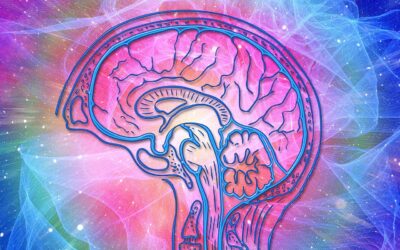AI Integration: Harmonizing Old and New Systems

The rapid rise of artificial intelligence (AI) is reshaping industries, promising improved efficiency, data-driven decision-making, and enhanced customer experiences. But while the potential of AI is immense, integrating it into existing systems presents significant challenges for businesses. Many organizations rely on legacy systems—older software, hardware, or infrastructure—that were not designed with AI in mind. These systems are often deeply embedded in company workflows, making it difficult to replace them outright.
The key to AI success lies in harmonizing old and new systems, ensuring that AI seamlessly integrates with existing technologies while unlocking new capabilities. This article explores the strategies and best practices for integrating AI with legacy systems, the common challenges businesses face, and how to navigate these complexities for a smooth transition.
Understanding the Challenge of AI Integration
AI technologies—such as machine learning, natural language processing, and computer vision—operate on vast amounts of data and require robust computational resources. Legacy systems, on the other hand, are often not equipped to handle the complexity and volume of modern AI workloads. Many legacy systems were designed with limited storage, processing power, and data interoperability, which complicates AI integration.
The challenge lies in ensuring that AI can access and process data from these systems without requiring a complete overhaul. Since businesses rely heavily on legacy systems for critical functions like financial transactions, supply chain management, or customer databases, replacing these systems is often not an option due to cost, complexity, and the risk of disrupting operations. Instead, companies need to find ways to bridge the gap between their existing infrastructure and AI capabilities.
Why Businesses Need to Harmonize Old and New Systems
AI integration is not just about adding new technologies to the mix; it’s about aligning them with existing business processes. When done right, AI can enhance the capabilities of legacy systems, breathe new life into them, and generate long-term value. Without a strategic approach to harmonizing old and new systems, companies risk underutilizing AI, leading to fragmented workflows, data silos, and inefficiencies.
Here’s why businesses must focus on harmonizing AI with legacy systems:
- Cost-Effective Modernization: Instead of discarding existing systems and investing in entirely new infrastructure, AI integration allows companies to augment legacy systems. This approach saves costs while enabling new capabilities.
- Data Continuity: Many legacy systems house valuable data that AI can leverage to generate insights. Integrating AI ensures that businesses can continue to use their historical data without needing to transfer everything to a new system.
- Minimizing Disruption: Abrupt changes in systems can lead to downtime, loss of productivity, and a learning curve for employees. By integrating AI into existing systems, companies can introduce new features incrementally without major disruptions.
Key Strategies for Successful AI Integration
The process of AI integration requires careful planning and execution. Below are some key strategies that businesses can adopt to harmonize their old and new systems effectively:
1. Assessing Compatibility and Infrastructure Gaps
Before diving into AI integration, companies need to assess the compatibility of their legacy systems with modern AI technologies. This involves auditing the existing infrastructure to identify gaps in storage, data formats, and processing power. For instance, older systems may rely on outdated programming languages or have limited API support, making it difficult for AI tools to interact with them. Understanding these limitations is the first step in determining the best path for integration.
At this stage, businesses should also evaluate whether they need to upgrade certain components of their infrastructure—such as servers, networks, or data storage systems—to support AI workloads. By addressing these gaps, organizations can create a foundation that is better suited for AI integration.
2. Leveraging Middleware for Data Interoperability
One of the biggest challenges of AI integration is ensuring data interoperability between legacy and modern systems. Legacy systems often store data in formats that may not be easily compatible with AI models, which require structured, clean, and accessible data. Middleware can play a critical role in bridging this gap by acting as a communication layer between the AI and the legacy system.
Middleware solutions help extract, transform, and load (ETL) data from legacy systems into formats that AI can process. By using middleware, businesses can maintain the integrity of their legacy systems while ensuring that AI has access to the right data for training models and making predictions. Moreover, middleware solutions can facilitate real-time data synchronization, ensuring that the AI systems are always working with up-to-date information.
3. Creating APIs for Legacy Systems
Application programming interfaces (APIs) are essential for enabling interaction between different systems. Many legacy systems lack built-in APIs, making it difficult for them to communicate with AI tools or cloud-based platforms. One approach to overcoming this challenge is to build custom APIs that allow legacy systems to send and receive data from AI platforms.
By creating APIs, businesses can create a seamless flow of data between old and new systems without needing to rewrite the underlying code of the legacy system. APIs can also facilitate the gradual integration of AI features, such as predictive analytics, into existing workflows, allowing businesses to modernize without disrupting operations.
4. Edge Computing for Decentralized AI Processing
For businesses that rely on legacy systems with limited processing capabilities, edge computing offers a valuable solution for AI integration. Edge computing allows AI models to run locally on devices or within network perimeters, reducing the need to send data to a centralized server or the cloud for processing. This decentralized approach minimizes latency, enhances data privacy, and enables real-time decision-making, even when dealing with older systems.
For instance, a manufacturing plant with legacy equipment can implement edge AI to analyze sensor data in real-time without overhauling its entire IT infrastructure. The AI models running at the edge can detect anomalies in equipment behavior and provide predictive maintenance alerts, all while working in tandem with the legacy systems that manage production lines.
5. Adopting a Hybrid Cloud Approach
Many businesses are turning to hybrid cloud solutions to facilitate AI integration with legacy systems. A hybrid cloud approach allows companies to run certain AI workloads in the cloud while keeping sensitive data or legacy processes on-premises. This provides the flexibility to scale AI initiatives without overburdening legacy infrastructure.
For example, AI model training—which typically requires significant computational resources—can be conducted in the cloud, while the model’s deployment and interaction with legacy systems can remain on-premises. This approach leverages the best of both worlds: the scalability of cloud computing and the reliability of on-premises systems.
6. Gradual Implementation of AI Features
AI integration should be viewed as an incremental process rather than a sudden overhaul. Businesses should start with small, targeted AI projects that can deliver quick wins, such as automating routine tasks or implementing chatbots for customer service. As these smaller projects prove successful, companies can expand AI’s role, integrating more advanced functionalities like predictive analytics or AI-driven business intelligence.
By adopting a phased approach to AI integration, businesses can minimize disruption and gradually build employee confidence in the new technology. This strategy also allows for ongoing evaluation, giving companies the opportunity to adjust their integration plans based on real-world results.
Challenges of AI Integration
While there are clear strategies for harmonizing AI with legacy systems, the process is not without challenges. Businesses must be prepared to address several potential obstacles along the way:
- Data Silos: Legacy systems often operate in silos, which can hinder the flow of data across the organization. Breaking down these silos is crucial for AI models to gain a comprehensive view of business operations.
- Technical Debt: Many legacy systems come with technical debt—accumulated inefficiencies from outdated code, software bugs, and workaround solutions. This can complicate the AI integration process, requiring extra resources to address these issues before AI can be effectively deployed.
- Change Management: Introducing AI into an organization can lead to significant changes in workflows and job roles. Resistance to change is a common challenge, especially in companies that have relied on the same systems and processes for decades. Clear communication, employee training, and change management initiatives are necessary to ease the transition.
- Scalability Issues: As AI models grow more complex and handle larger datasets, legacy systems may struggle to keep up. Businesses need to plan for future scalability, ensuring that their infrastructure can support growing AI workloads.
Unlocking the Full Potential of AI Integration
Despite the challenges, the rewards of AI integration are immense. When businesses successfully harmonize old and new systems, they can unlock new efficiencies, improve customer experiences, and gain deeper insights from their data. By carefully planning the integration process, leveraging tools like middleware and APIs, and adopting scalable technologies like edge computing and hybrid cloud, companies can achieve a seamless transition to AI-powered systems.
The future of AI in business will depend not only on the capabilities of AI itself but on how well it integrates with existing infrastructure. Businesses that master this integration will be well-positioned to capitalize on the full potential of AI, gaining a competitive edge in the ever-evolving digital landscape.









